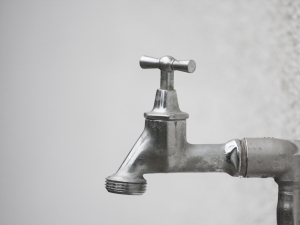Is Your Water Lead Free?
Most consumers are aware that lead contamination in the water supply can have serious repercussions. However, while lead fittings and pipes have not been in common usage for decades, it is possible that your home is at risk of lead contamination from the brass fittings used for your plumbing. While you may be confident that your home does not contain lead pipe work, brass is used in almost all fittings for residential and commercial water distribution systems. Almost every household faucet, valve, well pump and plumbing fitting is manufactured with parts made from brass. Lead is added to the brass to aid in casting the component, but it is possible for this lead to leach into your water supply.
The Sources of Lead in Your Drinking Water:
Lead contamination in drinking water is primarily the result of corrosion of the materials used during plumbing installation, such as lead solder, bronze or brass. The amount of lead which is attributable to corrosion depends on several factors including the age of the materials, the amount of time the water is left in contact with the surface, the method of manufacture and the corrosiveness of the water. As lead does not alter the taste, appearance or odor of your water, this could mean that lead is stealthily contaminating your water supply, potentially compromising the health of you and your family.
The Amount of Lead in Plumbing Fixtures: 
The 1996 amendments for the Safe Drinking Water Act (SWDA) determined that no plumbing fixture or product used for the repair or installation of plumbing for human consumption can contain greater than 8% lead. However, from January 2014 new federal regulations (NSF Standard 61, Section 9) dictate that there can be no greater than 0.25% lead in any brass plumbing components, which are labeled as “lead free.” Any “lead free” components which were manufactured before this date could still have up to the 8% limit.
Can Lead Free Fittings Still Contribute to Lead in Your Drinking Water?
Even lead free fittings which comply with federal regulations still contain up to 0.25%. While this level of lead seems small it can still contribute to high lead levels in your water. Even when the device is in contact with relatively non-corrosive water, the water can be contaminated with a high lead level for a considerable amount of time after the installation. While the amount of lead which may leach into the water supply from a brass fitting is not wholly related to the lead quantity of the fixture, obviously the greater the amount of lead, the greater the risk of contamination. This means that if your plumbing fixtures were repaired or installed before 2014, they are likely to contain even higher amounts of lead, putting you and your family at greater risk. Since lead is not detectable by taste, odor or appearance in your water supply, it is, therefore, important to have your water tested. Laboratory testing is the only reliable method of determining if your water supply has been contaminated by lead leaching from your brass fittings.
About The Author:
Greg Scott is President of Valparaiso based Miracle/EcoWater Systems, the premier water conditioning company in Northwest Indiana serving the Lake, Porter and LaPorte County areas. A 3rd generation water treatment professional, Greg grew up in the family owned business started by his grandfather in the late fifties. He has made water treatment his life and under his direction and high-standards, the company’s water treatment experience, knowledge, and products are unrivaled in region.
